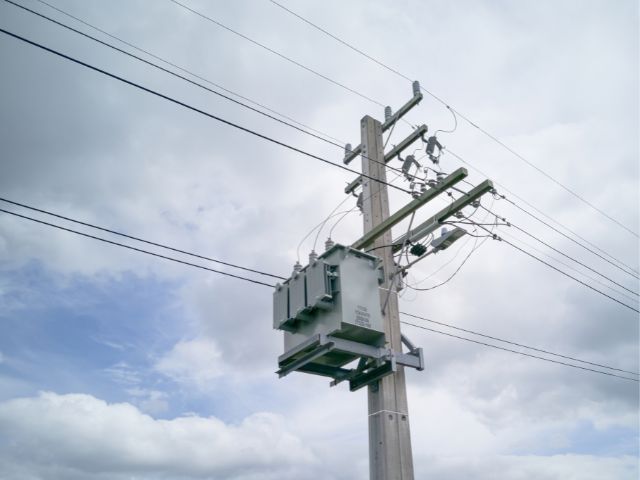
 Press Releases
Press Releases 
Utility poles support overhead power lines and communication cables, which are crucial for transmitting electricity and internet services. Traditional utility poles are wooden, but over the years, other materials have improved the durability of this essential power infrastructure. Learn more about three common materials used for making utility poles.
Wooden utility poles are often crafted from Douglas Fir, Western Red Cedar, and Southern Yellow Pine. Wood is a popular choice because of its low up-front cost and ease of installation. It’s relatively easy to shape and transport wood, and because wood is a renewable option, it’s easy to source.
However, compared to other materials, wood is more vulnerable to environmental damage, such as from pests, water, and fire. If the wood becomes compromised and deteriorates, the affected pole becomes dangerous and can collapse, create an electrical hazard, or cause sudden power failure.
Another common material used for making utility poles is metal. Steel is frequently used, but ductile iron is rising in popularity due to its strength, light weight, and lengthy service life. Ductile iron is more affordable than steel or concrete thanks to its lower cost over its life cycle.
Utility companies can improve transmission poles by constructing them with materials, finishes, and accessories that increase resilience. Metal poles have enhanced strength and load-bearing capacity, enabling them to withstand strong winds and support heavier loads than wood. Additionally, metal poles are completely resistant to rot and pests.
Finally, many utility poles are constructed from reinforced concrete. Concrete poles can last several decades with minimal maintenance, and, like metal, they are fire-resistant.
However, concrete poles are heavier than wood and steel, making transporting and installing them expensive, complex, and labor-intensive. Also, concrete pole production produces a significant amount of greenhouse gas emissions.
Utility poles can be made from wood, metal, or concrete, and each material has advantages and limitations in terms of manufacturing, installation costs, and durability. Consider environmental factors and upkeep requirements to choose a high-performance material for safe, reliable, and low-maintenance utility poles.
24World Media does not take any responsibility of the information you see on this page. The content this page contains is from independent third-party content provider. If you have any concerns regarding the content, please free to write us here: contact@24worldmedia.com